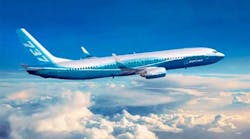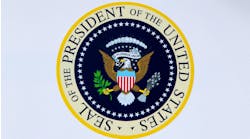NEW YORK -- U.S. air-safety regulators on Monday said they would inspect more than 1,000 Boeing 737s for a faulty tail part that could cause a pilot to lose control of the jetliner.
In a new safety headache for Boeing (IW 500/16) three months after its 787 Dreamliner was grounded worldwide, the Federal Aviation Administration said it would inspect the single-aisle 737s for improperly mounted pins on the tail and replace those found faulty.
The FAA said the airworthiness directive (AD) would take effect on May 20 and "affects 1,050 airplanes of U.S. registry."
"We are issuing this AD to prevent premature failure of the attach pins, which could cause reduced structural integrity of the horizontal stabilizer to fuselage attachment, resulting in loss of control of the airplane," the FAA said.
The agency notice did not mention any incident so far resulting from the faulty parts.
The affected planes include the -600, -700, -700C, -800, -900, and -900ER models of the 737.
The single-aisle 737 is Boeing's most popular model, with more than 10,000 planes sold.
Price Tag Could Approach $10 Million
The FAA estimated the operation could cost as much as $10 million to U.S. airlines, but part of the cost may be covered by the manufacturer's warranty.
Boeing said the action had been planned "for some time" after the company issued its first notice of the problem in April 2012.
"This AD is not linked to any in-service event but rather a finding of a surface finish degradation on recently installed attachment pins," Bret Jensen, a Boeing Commercial Airplanes engineering spokesman, said in an email to AFP.
Jensen noted that the directive "does not require immediate action for any currently flying 737s" because it requires inspection and possible replacement of the pins by 56,000 flight cycles.
Among the currently flying 737s, the aircraft with the most cycles is at 40,000 flight cycles, he said.
The safety development came as Boeing works with the FAA to get its 787 Dreamliner back in the skies after overheating batteries grounded the new high-tech plane worldwide in mid-January.
The US aerospace giant conducted a second and final 787 Dreamliner test flight on April 5 to assess its proposed battery fix.
Copyright Agence France-Presse, 2013




